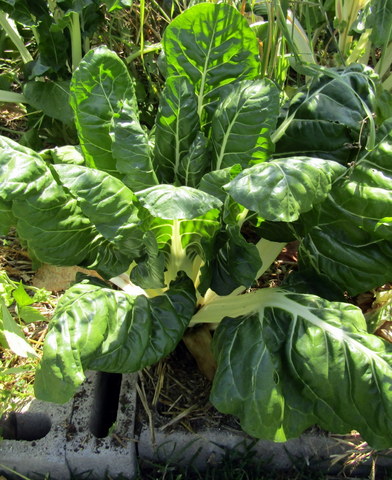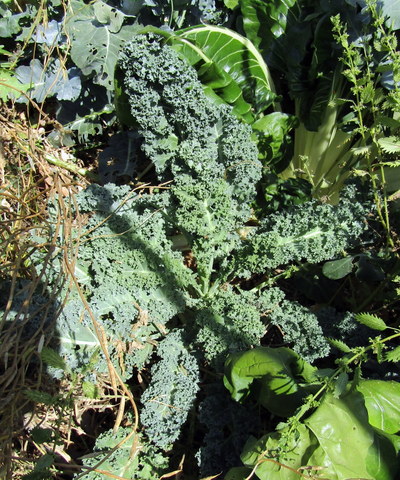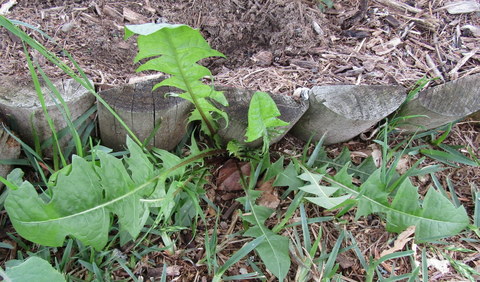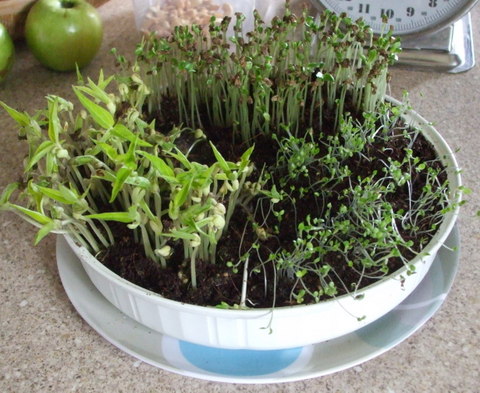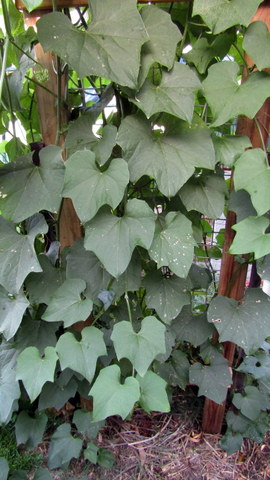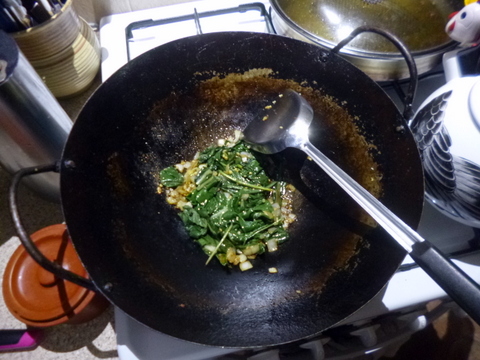There is a wonderful quote at the start of the Happen Films Documentary “Degrowth in the Suburbs”, from Sam, one of the owners of the property. He says – “It’s interesting how much overlap there is between the practices of Sustainability and the practices of resilience, in this context almost 100% overlap”. Of course one of the practices to which he refers is growing food at home, and it is my contention that a substantial contribution to both greater sustainability and greater resilience can be gained by growing leaf crops.
Leaf crops (AKA ‘greens’) are crops which are grown primarily so we can eat……..their leaves (a revelation I know!). They have peculiarities in the way which they grow (eg shallow root systems, short time to harvest and shade tolerance) and a variety of ways in which to grow them (eg catch cropping, cut-&-come-again or the “Eat all” technique), and then consume them (eg smoothies, braised or steamed). They can greatly facilitate our efforts to live more sustainably and increase our food resilience.
While this article deals mainly with cultivated leaf crops, it should also be noted that they do come in three major varieties –
Cultivated ie they are grown commercially or in the back yard to provide leaves for us to eat - eg, amaranth, bok choi, cabbage, collards, chicory, coriander, endive, kale, lettuce, Malabar spinach, mibuna, mizuna, Okinawa spinach, rocket, silver beet, spinach, sorrel and tatsoi.
Wild (AKA weeds or wild herbs) which are naturalised in many countries around the world and are generally regarded as weeds (ie a plant out of place) and despatched summarily, but which can also be foraged and eaten eg catsears, (flatweed), chickweed, dandelion, dock, fathen, mallow, plantain, prickly lettuce, purslane, sow thistle and stinging nettle.
Accessory – These are attached to productive plants we grow for other reasons but which are edible in their own right eg, beetroot, cauliflower, choko, peas & beans, radish, sweet potato and turnip.
(Note: While not every point listed below applies to every leaf crop mentioned above, they will apply to the majority of them.)
Growing
Leaf crops have a number of aspects which can be turned to our advantage when growing them for food, either by themselves or in combination with other plants -
They have comparatively shallow root systems –while this means that they require regular watering, (but not to water so deeply as to waste water) it also means that they can be grown amongst other species which have deeper root systems with little or no root competition between the species. For example interplanting a leaf crop such as lettuce with deeper rooted tomatoes will allow both plants to coexist happily.
Short Time to harvest – some slow growing popular crops like cauliflower, celery or eggplant can take 100 to 120 days from sowing to providing an edible crop, but the majority of leaf crops produce worthwhile food in half that time, 50 to 60 days. Cabbage is an exception, taking 105 to 120 days to producing a harvestable head. Short time to harvest leaf crops include: amaranth (50 days), bok choi (60 days), collards (40 days), coriander (30 days), kale (50 to 60 days), lettuce (40 to 50 days), Malabar spinach (70 days), mizuna (40 to 60 days), mustard (30 to 50 days), rocket (60 days), silver beet (40 to 60 days), spinach (40 to 50 days) and tatsoi (40 to 50 days).
Nutritional requirements – leaf crops particularly use nitrogen so a high nitrogen fertiliser like bird manure (chook, pigeon etc), liquid manure, diluted urine (in a pinch) or following legumes in your crop rotation program. If you can get hold of them, lucerne chaff, cottonseed meal and soy meal provide a slower release nitrogen along with small amounts of phosphorus and potassium, when incorporated into the soil or used as mulch.
Shade Tolerance – leaf crops can get by with three hours of direct sunlight per day or less so they are an ideal crop where shading is an issue. This can be particularly handy when the shading is provided by things which are difficult to move such as buildings, tall trees or solid fencing.
They can be grown all year and replanted into a single plot if required, provided that correct crop rotation protocol is followed. It is counterproductive to grow the same crops in the same ground year by year due to depletion of nutrients and build-up of pests and diseases. One way to prevent this is to develop a crop rotation plan.
There are various schemes for developing a crop rotation plan but one of the easiest is to make sure that you don’t sow plants from the same family, in the same plot, two seasons running. Leaf crops make this easy for you because they belong to half a dozen different plant families, allowing the same growing area to support a number leaf crops over time, provided to make sure to choose plants from different families.
Plant families of common cultivated leaf crops:
Apiaceae – Coriander, parsley
Amaranthaceae – amaranth, spinach
Asteraceae – chicory, endive lettuce
Basellaceae – Malabar spinach
Brassicaceae – cabbage, collards, kale, mibuna, mizuna, bok choi, mustard, rocket, tatsoi
Chenopodiaceae – silver beet,
Polygonaceae - sorrel
Methods of Growing
Interplanting – Due to their shallow root systems, and their shade tolerance, leaf crops can be planted in the same bed as deeper rooted, crops such as corn or tomatoes and still provide a reasonable harvest. This practice increases the yield on a given piece land but can also deter pests.
Catch cropping – This is the practice of planting a quick growing crop between main crops of vegetables. So that if you have some space after your winter vegetables have been harvested but the summer vegetables are not quite ready to go in, a quick leaf crop can provide a yield for an area which otherwise would not be able to.
Growing in Containers – Leaf crops being shallow rooted comes to the fore again, making it easy to grow them in containers. This has a number of advantages, particularly if you are in rented accommodation and/or only have a small space in which to grow things, like a balcony. Growing leaf crops in containers will allow you to take your food with you if you have to move and also to “follow the sun” and move them around make the best of available light if that is a restriction on where you are growing.
Cut-and-come-again Croppping – most leaf crops will allow you to spread the harvest by continuing to grow after you cut off and eat the outside leaves if you don’t remove the central growing point, rather than harvesting the plant as a whole. You can start early, when the plant is just beginning to mature, and cut the leaves cleanly off at the base of the leaf stem. The plant will continue to produce new leaves from the central growing point as the older leaves become available for harvest from around the outer base of the plant. In that way, a few leaf crop plants can keep you in nutritious greens for months.
The ‘eat-all’ method - This method of leaf crop production was developed by Carol Deppe, and described in her book “The Tao of Vegetable Gardening”. The idea is to sow seed for an “eat all” leaf crop thickly into a well prepared and fertile growing bed or even a 15cm bed of compost over concrete or whatever. Then use a grass rake to lightly cover the seed and water well. The plants are kept watered and grown quickly until they reach about 25cm high, at which point they are harvested by using a sharp knife to cut off the top 18cm or so, which can then be cooked and eaten, frozen, or dried. It might require a bit of fooling around with timing and varieties to suit a particular region, she says that ‘green wave’ mustard works well for her area.
Sowing thickly then thin out – The idea is again, to sow a leaf crop thickly onto a prepared seed and water it well to assist germination. When the seedlings come up it is just a case of harvesting the greens by pulling them out to thin the crop. This allows some to grow longer and achieve a bigger size, while the thinnings are eaten immediately as a salad crop or included in stir fries or whatever. This will spread the harvest so that while some of the crop will reach maturity, the majority will have been eaten regularly along the way as a delectable young leaf crop, while still allowing a reasonable harvest at the end of the growing period.
Sprouts – some leaf crops can be prolific seeders, (such as almost any of the brassicas) but may also cross pollinate with other crops of the same family which happen to be flowering at the same time. It makes sense to keep only your best seed which has been gathered so that it is guaranteed to remain true to the parent variety, but what if you have seed of unknown or suspect quality? They can still be eaten as sprouts or microgreens because in either case the plant is harvested at a juvenile stage. In terms of sprouts, the easiest way to grow them is to get a large glass jar and cover the open end with mesh (such as discarded panty hose) and secure it with a rubber band. Remove the mesh and pour in one or two dessertspoons full of seed and re-attach the mesh. Half fill the jar with water and leave it overnight. Pour off the water the next morning, then refill and empty the jar with water (by pouring straight through the mesh) morning and night until the sprouts are well grown enough to harvest, say 7 to 10 days depending on the type and variety of leaf crop and the time of year.
Microgreens in a similar way the seed is sown thickly in a seedling flat, kept watered and allowed to grow to the four leaf stage or a bit larger, then harvested at the soil surface with a pair of scissors. In both cases all that is needed is to produce some edible leafage and stems, so whether the crop is true to the parent stock is immaterial.
As a component in a Guild – According to Bill Mollison, a guild is - “a harmonious assembly of species clustered around a central element (plant or animal) that acts in relation to this element to assist its health, aid our work in management, or buffer adverse environmental effects.” This can translate into a design around a central tree such as a fruit or nut tree with a whole lot of productive species planted around it, to support the central tree, but also increase the yield of the area as well. Leaf crops, with their ability to grow quickly, not compete with deeper rooted species and tolerate shade are ideal to include in the species being grown.
Use as a component in green manure – while this does not allow for direct harvest and consumption, it promotes healthy fertile soil allowing subsequent crops to be more abundant. Green manures are used to improve the fertility of vegetable areas by growing suitable plants, quite often grains and legumes but leaf crops area also valuable, and then cutting them down before they flower. The resulting organic matter can be either left on the surface of the soil as a mulch or dug in to increase soil organic matter. Either way the fertility of the soil is increased for the next crop.
Eating/Drinking
Nutrition
Leafy vegetables contain significant amounts of the vitamins A, C, E and K as well as folate and the minerals calcium, magnesium, potassium and iron. Some are also valuable sources of omega-3 fatty acids. They also contain fibre, with each cup of leaves contributing to around a gram of fibre to our diets but are low in calories and carbohydrates.. Leafy greens are also rich in phytonutrients and chlorophyll.
Smoothies
There have been many scientific studies which have shown a link between a reduced risk of illness and increased consumption of fruit and veg, and while I personally am not a fan (to be good for you, you have to be able to keep the smoothie down) many people consume leafy veg in the form of smoothies.
Cooking Leaf Crops
- Wilted or steamed greens – leaf crops can be wilted by first washing them, then placing them in a pot and cover then cook for one to three minutes until they are wilted and bright green in colour. Remove them from the heat and serve with salt and pepper or a drizzle of soy sauce. Steaming them requires putting the leaves in a pot with 5mm of water in the bottom, covering and cooking for a couple of minutes.
- Sautéed Leaves – heat some oil in a large pan or wok to medium heat, then add the leaves in batches and stir gently until they are all in the pan.
- Blanching (should be done before freezing leaf crops to preserve them) – remove the stems and wash the leaves well. Bring a large pot of water to the boil and plunge the leaves in, allowing them to cook for a minute or two, then remove them from the boiling water, drain and chop. They can then be frozen, or added to soups and stews.
- Braising – start out as for sauté as above then sprinkle some salt over the leaves and add a small amount of liquid (water, stock etc) to keep the pan moist, think about 12mm of liquid in the pan, then continue to cook the leaves until they are just tender.
Any of the above techniques may be improved by cooking some onions and garlic in the pan prior to adding the greens, or the greens can then be added to soups, stews or casseroles towards the end of the cooking time.
There is a wonderful Greek dish called horta which will work with cultivated or wild greens, that involves wilting the leaves as above and then adding some olive oil and/or lemon juice at the end. I am a bit Anglo for that so I add in onion and garlic and fry it up, then add in a jar of our diced tomatoes, then toss in the leaves and braise until tender. Other recipes for your well grown leaf crops can be downloaded here.
Preserving
There is no doubt that the best tasting leaf crops you will ever enjoy are the ones you harvest directly from your backyard, cook and then eat within half an hour of harvest, and if you plan it out you can grow leaf crops most of the year to facilitate this. You may, however, also want to put some aside if you grow a big batch or for when the weather becomes inclement in your area.
- Fermentation
Think cabbage and sauerkraut, but many wild and cultivated leaf crops will introduce a very strong flavour to the ferment. If you find you like this flavour that is a good thing but if you find it to be a turn off after preserving 500 litres of the stuff, then that could be a problem. So, the hint is – if you are planning of growing large batches of a particular leaf crop and want to preserve it by fermenting, try a small batch of the ferment first. If you like it all well and good, if you find it to be a very effective emetic, you haven’t lost much. If you are already into fermenting, try adding some leaf crops in small amounts to other vegetable ferments which you are comfortable with.
- Freezing
This is probably the most effective way of preserving leaf crops. Process the leaves to be frozen by washing them, cutting out the stems and then chopping them. Bring a large pot of water to the boil and prepare large a bowl of ice water. When the water is boiling, immerse the chopped leaves and cook them until they are bright green and barely tender. This should take somewhere between 30 seconds up to a couple of minutes for the tougher leaves. Drain the leaves once the time is up and plunge them into the cold water and stir around to cool them down quickly. Remove and dry as well as possible, force down into containers to remove as much air as possible, label and freeze.
- Dehydration
This may not be the best method for preserving your excess greens but can work with the tougher leaves like kale, collards and spinach. Wash and dry the leaves thoroughly and cut into roughly 2.5cm squares. Dehydrate spinach for 6 to 8 hours at 45°C, kale and collards for 8 to 10 hours at 55°C. Store in a sealed container.
Leafy vegetables (or ‘greens’) are easy to grow and healthy to eat, and with little effort can be grown year ‘round. What more do you need to make it worth adding leaf crops to your sowing plan and your eating plan?



